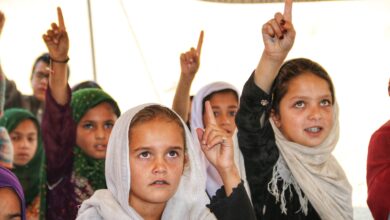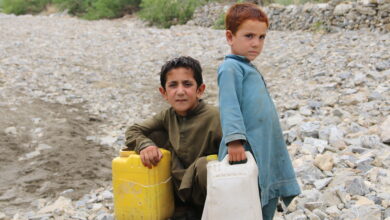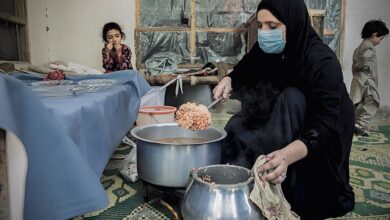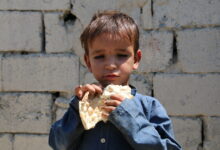The Dual Crisis: Displacement and Food Insecurity
Severe flooding in northeastern Afghanistan has claimed hundreds of lives and displaced thousands, deepening an already critical food insecurity crisis that leaves one in three Afghans unsure where their next meal will come from.
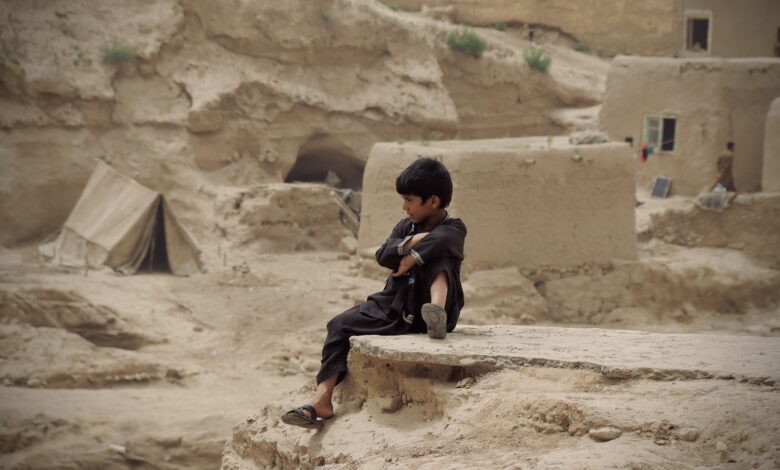
For World Food Day, October 16, 2024, the Afghan Times and IUF Asia/Pacific released a report “Women and Food Insecurity in Afghanistan” highlighting the country’s worsening food crisis, deteriorating health conditions, and rising malnutrition, exacerbated by the Taliban’s systematic repression on women and girls’ rights.
On may 10 and 11, 2024, a severe weather event unleashed torrential rainfall across northeastern Afghanistan, triggering devastating flash floods that affected 21 districts in Baghlan, Badakhshan, and Takhar provinces. The deluge resulted in widespread destruction, claiming at least 180 lives and injuring more than 240 individuals. Among the victims, 51 were children and 50 were women. The floods have left a profound impact on the region, amplifying an already critical food insecurity crisis.
In Baghlan Province alone, the devastation has been particularly severe. The districts of Baghlani Jadid, Burka, Dahnai Ghori, Doshi, Guzargah Noor, Jelga, Khost, Nahrin, Puli Khumri, and Tala wa Barfak were hit hard. Initial reports confirm 73 fatalities and 76 injuries in Baghlani Jadid, with 1,500 homes damaged or destroyed. Burka district suffered 70 deaths and 150 injuries, and approximately 5,000 homes were affected. Other districts such as Dahnai Ghori, Guzargah Noor, Jelga, Nahrin, and Puli Khumri collectively reported 13 deaths and damage to 1,612 homes. Additionally, Khost and Tala wa Barfak faced significant destruction, with 603 homes affected.
The flood’s impact extends beyond just homes. Eleven health facilities in Baghlan and Takhar provinces have been disrupted, undermining vital health and nutrition services. Roads, bridges, and public schools have also been severely damaged, and 4,260 livestock have been lost, further exacerbating the food crisis. In Takhar Province, 24 fatalities were reported in Chall, Ishkamish, Farkhar, and Namak Ab districts, with over one hundred homes damaged. Badakhshan Province, especially Teshkan district, saw 200 homes destroyed, 50 bridges and 30 electricity dams damaged, and 2,000 animals killed.
The floods have forced thousands into displacement, compounding an already dire food security situation. Twelve-year-old Saeedullah, now homeless, reflects the broader crisis. “I lost everything—my mother, my home, my uncle, and my friends,” he says, his voice laden with grief. His school is destroyed, and the floodwaters have wiped out much of the infrastructure that once supported his community.
Eight-year-old Fatima, who now lives in a makeshift tent, faces severe shortages of essentials. “We are now sleeping on the ground without mattresses or blankets,” she says. Her family struggles to prepare food with inadequate resources. “Our neighbors and relatives died in the flood. We have nothing left,” she adds, highlighting the profound loss and scarcity they face.
Nearby, Nargis and her family are also enduring harsh conditions. Their tent offers minimal protection, and they lack even basic necessities like food. “There is nothing else,” Nargis laments. “Someone gave us a tent to hide from the sun, but we don’t even have food for tonight.”
The World Food Program (WFP) has reported that the flooding has exacerbated Afghanistan’s already critical food insecurity. With one in three Afghans unsure of where their next meal will come from, the disaster has intensified the struggle for food.


